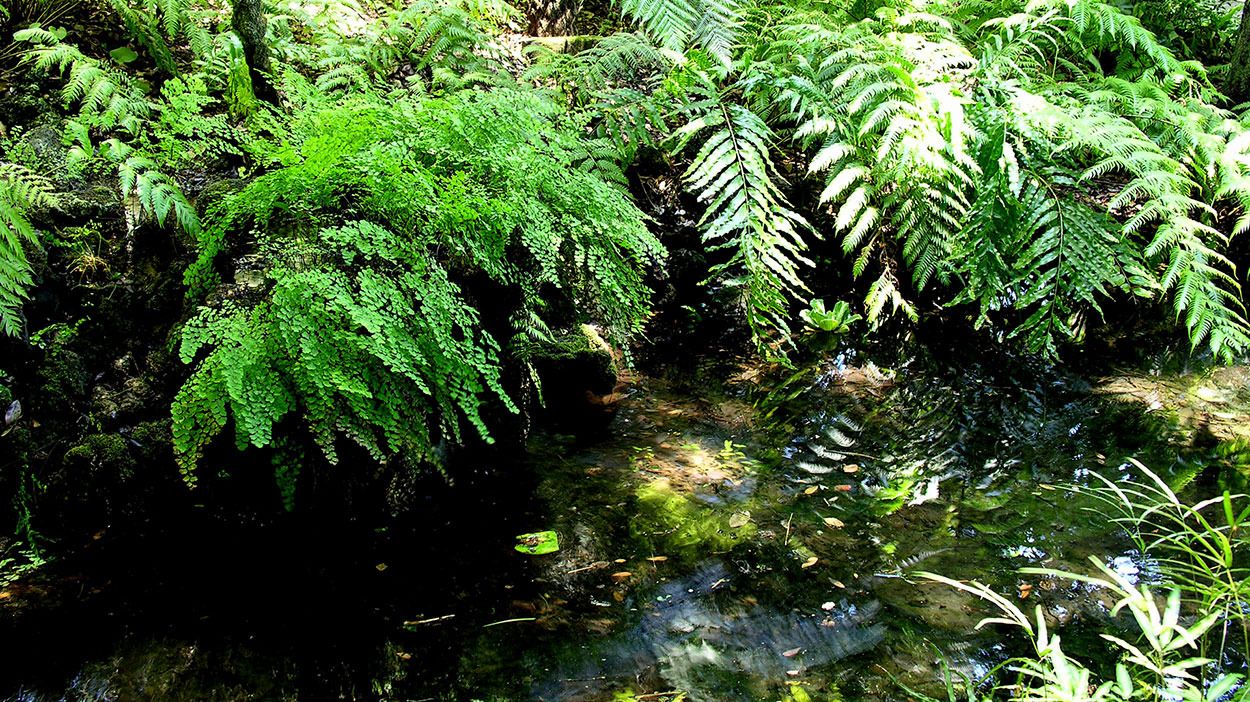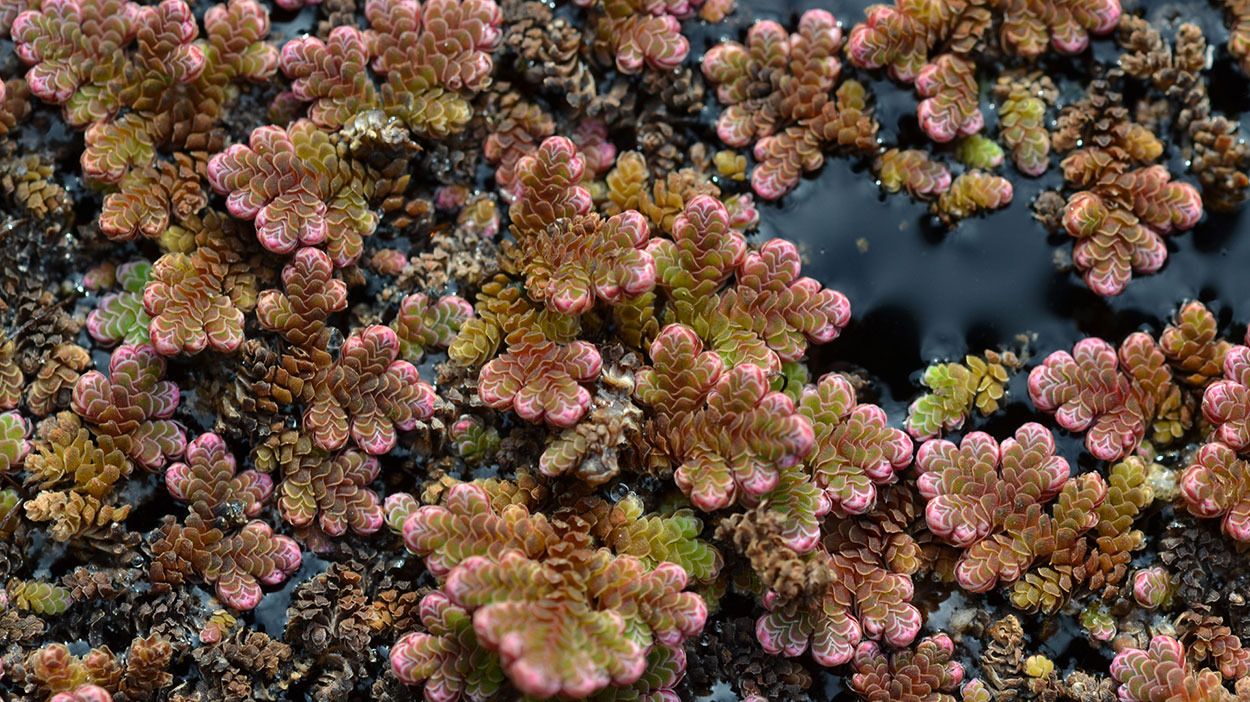In this section of the garden, located a few meters below the surrounding areas, the necessary conditions of shade and humidity for the cultivation of ferns and related plants have been reproduced. In fact, the area is girdled by trees protecting it from excessive sunlight, while artificial ponds (along with abundant and frequent watering) ensure the necessary humidity.
With the exception of some specimens of the genera Selaginella and Equisetum, the plants cultivated in this area belong to ferns in the strict sense, with a wide representation of European and extra-European species. Among the latter, the bird's nest fern (Asplenium nidus), the stag horn fern (Platycerium alcicorne), and tree ferns of the genera Dicksonia and Sphaeropteris are worth mentioning.
-
filiceto
A system of artificial ponds helps keep humidity high.

A system of artificial ponds helps keep humidity high.
-
filiceto
Azolla filiculoides Lam., an aquatic fern, is a small plant that forms mats floating in the water. It lives in symbiosis with microorganisms that fix atmospheric nitrogen and is therefore used as a living fertilizer in rice fields in tropical climates.

Azolla filiculoides Lam., an aquatic fern, is a small plant that forms mats floating in the water. It lives in symbiosis with microorganisms that fix atmospheric nitrogen and is therefore used as a living fertilizer in rice fields in tropical climates.
-
filiceto
In spring, the royal fern (Osmunda regalis L.) produces reproductive fronds. It is a rare species native to almost all of Europe, reaching south to northwestern Africa and east to Iran.

In spring, the royal fern (Osmunda regalis L.) produces reproductive fronds. It is a rare species native to almost all of Europe, reaching south to northwestern Africa and east to Iran.
-
filiceto
Specimen of Lyssotriton vulgaris Linnaeus, 1758, the common newt, a small urodele amphibian present with a small population in the fern garden.

Specimen of Lyssotriton vulgaris Linnaeus, 1758, the common newt, a small urodele amphibian present with a small population in the fern garden.
-
filiceto
Fronds of Asplenium nidus L., a fern that is naturally distributed from Malaysia to Australia.

Fronds of Asplenium nidus L., a fern that is naturally distributed from Malaysia to Australia.
-
filiceto
Selaginella kraussiana L., very small in size, belongs to a group of vascular plants that are very ancient and closely related to true ferns.

Selaginella kraussiana L., very small in size, belongs to a group of vascular plants that are very ancient and closely related to true ferns.
-
filiceto
Fronds of Woodwardia radicans (L.) Sm., a rare species that mainly inhabits the western part of the Mediterranean region.

Fronds of Woodwardia radicans (L.) Sm., a rare species that mainly inhabits the western part of the Mediterranean region.
-
filiceto
A glimpse of the fern garden.

A glimpse of the fern garden.
-
filiceto
Tree ferns live exclusively in the southern hemisphere; they are cultivated outdoors in the fern garden thanks to the mild climate of Naples.

Tree ferns live exclusively in the southern hemisphere; they are cultivated outdoors in the fern garden thanks to the mild climate of Naples.





















 Sistema Museale di Ateneo
Sistema Museale di Ateneo